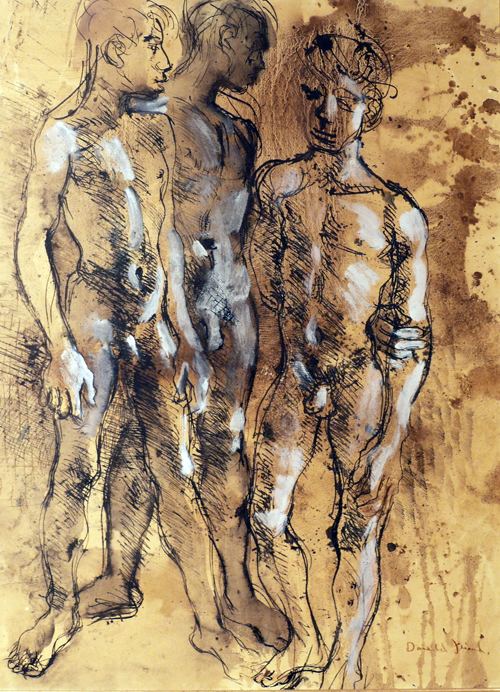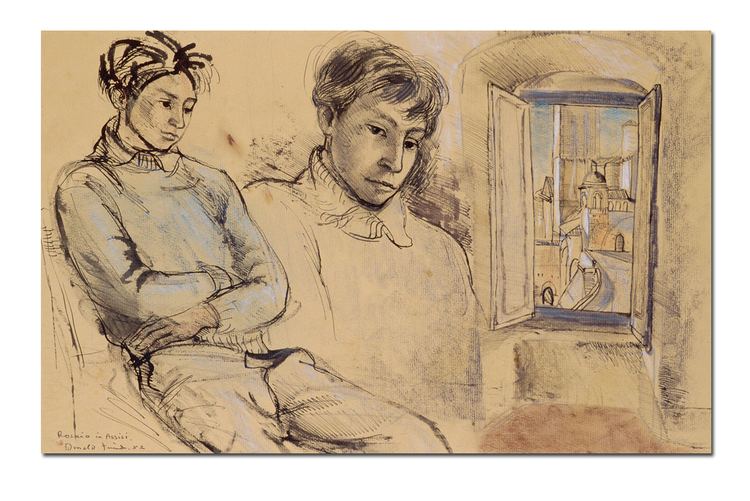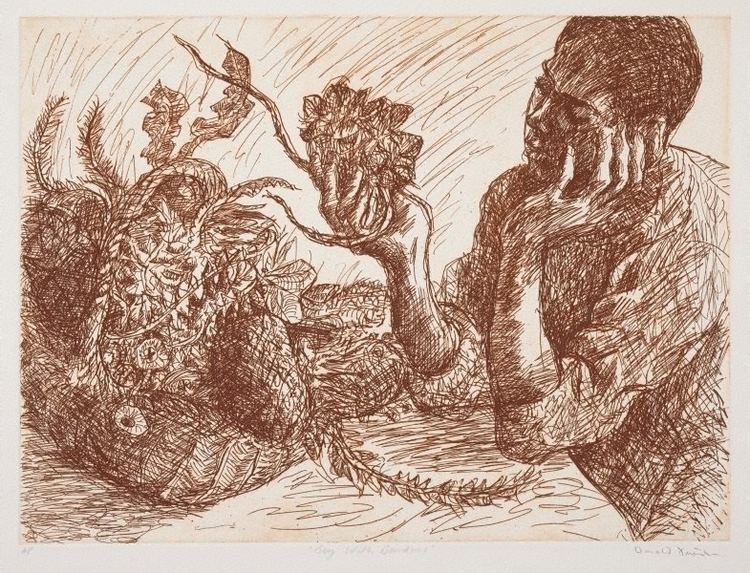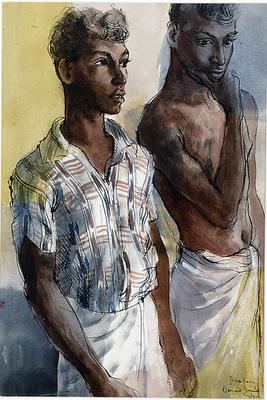Nationality Australian Role Artist | Name Donald Friend Known for Painting, Diarist | |
 | ||
Full Name Donald Stuart Leslie Friend Died August 16, 1989, Sydney, Australia Artwork The Four Seasons - Winter, The Four Seasons - Autumn | ||
Yoruba Sculpture, ex-Donald Friend Collection
Donald Stuart Leslie Friend (6 February 1914 – 16 August 1989) was an Australian artist and diarist.
Contents
- Yoruba Sculpture ex Donald Friend Collection
- Deutscher Hackett Donald Friend Auction
- Early life
- Career
- Diaries
- Major collections
- References

Deutscher Hackett Donald Friend Auction
Early life

Born in Sydney, Friend grew up in the artistic circle of his bohemian mother and showed early talent both as an artist and a writer. He studied with Sydney Long (1931) and Dattilo Rubbo (1934–1935), and later in London (1936–1937) at the Westminster School of Art with Mark Gertler and Bernard Meninsky. During World War II he served as a gunner with the AIF, and while stationed at Albury began a friendship with Russell Drysdale, which led to their joint discovery of Hill End, a quasi-abandoned gold mining village near Bathurst, New South Wales, which in the 1950s became something of an artists' colony. He also served as an official war artist in Labuan and Balikpapan in 1945. After the war he lived for a time in the Sydney mansion-boarding house Merioola, exhibiting with the Merioola Group.

Much of Friend's life and career was spent outside Australia, in places as diverse as Nigeria (late 1930s, where he served as financial advisor to the Ogoga of Ikerre), Italy (several visits in the 1950s), Ceylon (now Sri Lanka; late 1950s – early 1960s), and Bali from 1968 until his final return to Sydney in 1980.
Career

Friend's critical reputation in the 1940s equalled those of William Dobell and Russell Drysdale, but by the time of his death it had sunk so low that his work was totally absent from the 1988 Australian Bicentennial exhibition, a show meant to include every artist of importance since white settlement.
Friend made "no attempt to disguise the homoeroticism which underlay much of his work", despite winning the Blake Prize for Religious Art in 1955.
Friend was well known for studies of the young male nude, as well as his wit. His facility as a draughtsman may have contributed to the undervaluing of his work, which art scholar Lou Klepac said "always looked too easy – decorative, flowing and natural". In the mid-1960s, Robert Hughes described him as "one of the two finest draughtsmen of the nude in Australia," and noted his humanism and lack of sentimentality, while still maintaining that he was not a major artist. Barry Pearce, however, writing in the study which accompanied Friend's posthumous retrospective at the Art Gallery of New South Wales in 1990, said that Hughes' judgement seemed harsh and called for a re-evaluation of Friend as an artist whose "contribution to the richness of Australian art is due for much greater recognition".
Friend published a number of illustrated books, almost all in limited editions.
Diaries
Friend's diaries were published posthumously from 2001 to 2006 by the National Library of Australia in four volumes. He had kept a diary since the age of 14. It chronicled in half a million words a life peopled with such artists as Drysdale, Margaret Olley, Jeffrey Smart, Brett Whiteley and others.
Friend did not mince words about his sexual preferences, depicting himself as "a middle-aged pederast who's going to seed" in his journal.His relationships were mostly with adolescent boys, some of whom became his lifelong friends, particularly Attilio Guarracino.
Volume Four dealt in part with Friend's time in Bali in the 1960s and '70s. Publicity claimed "this volume confirms Friend's quicksilver creative brilliance and extraordinary insight. He is perhaps Australia's most important twentieth-century diarist".
